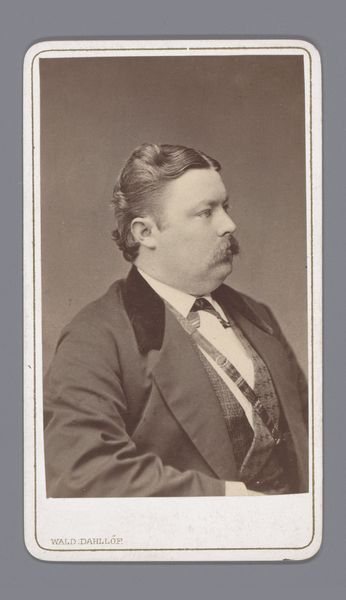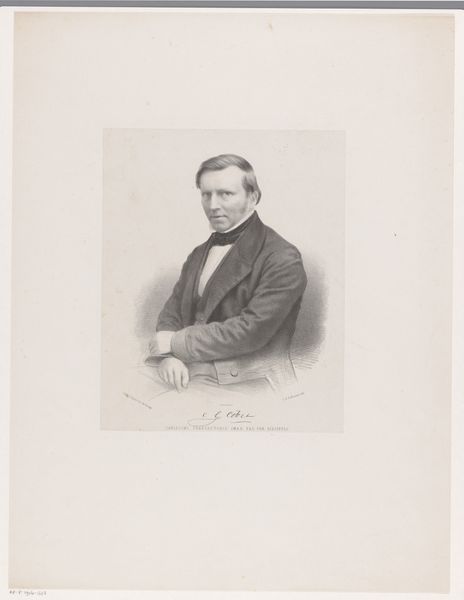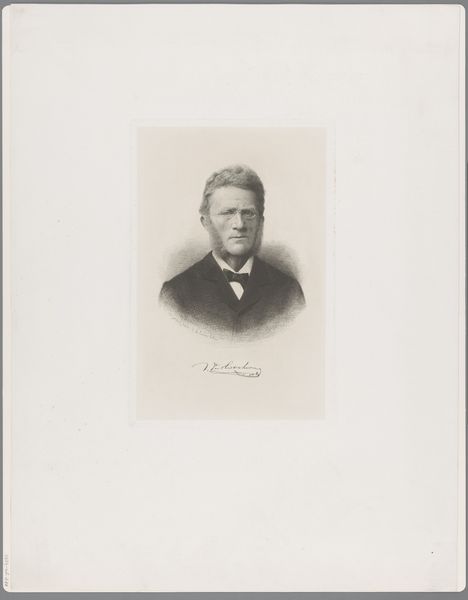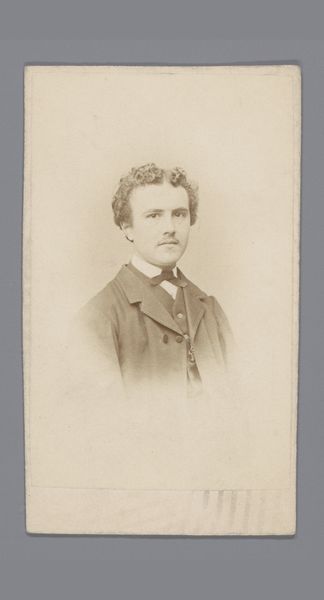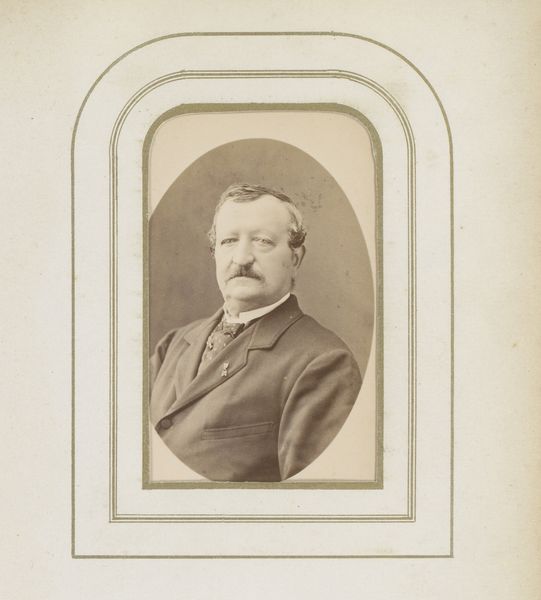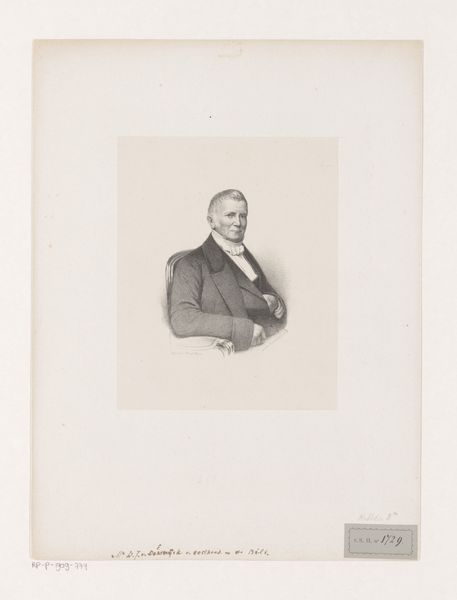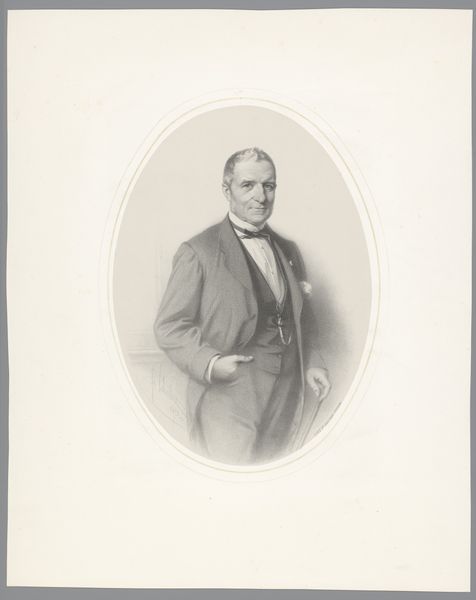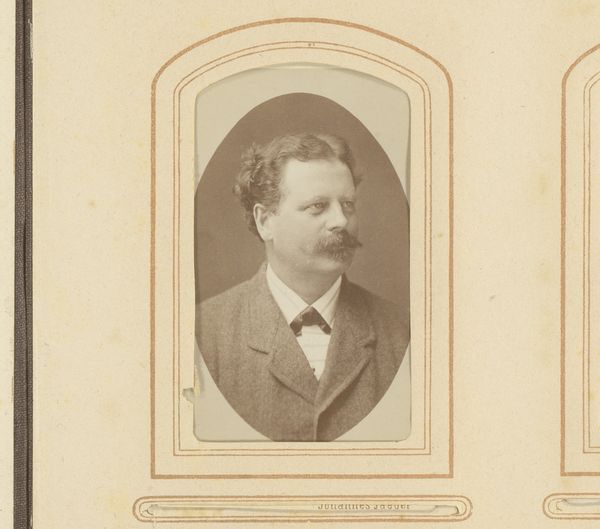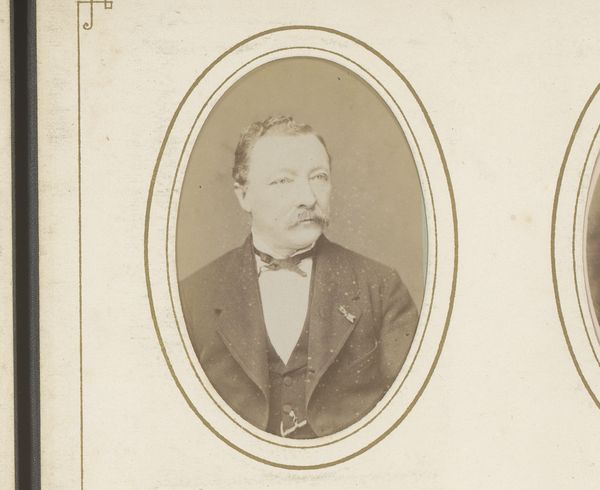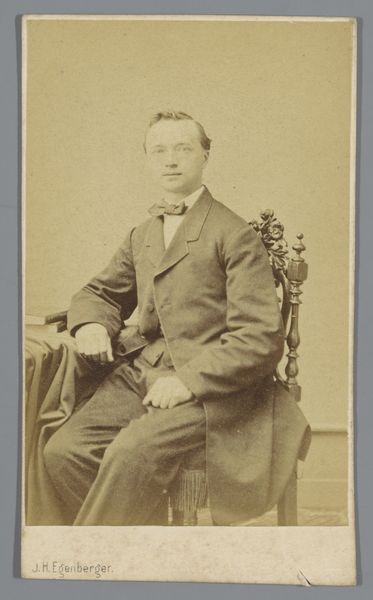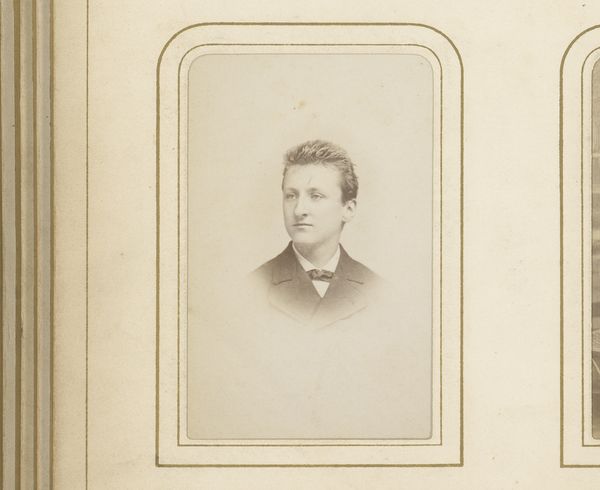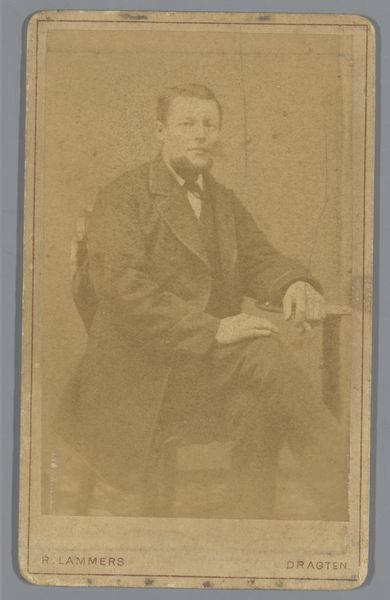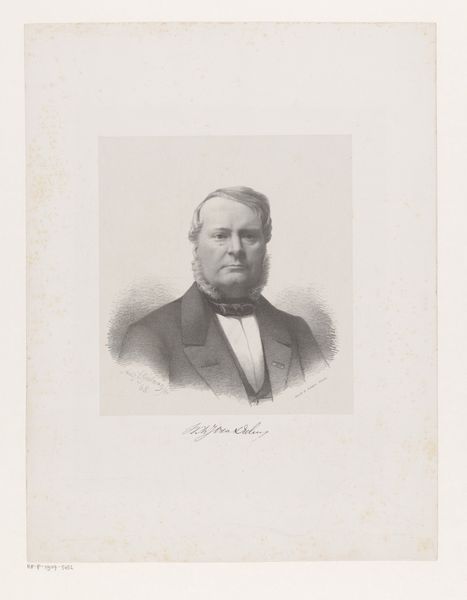
print, graphite, engraving
#
portrait
# print
#
graphite
#
history-painting
#
academic-art
#
engraving
#
realism
Dimensions: height 588 mm, width 389 mm
Copyright: Rijks Museum: Open Domain
Curator: There's a quiet dignity to this piece, almost a studied restraint. Editor: Absolutely, it feels very much of its time. We are looking at a print titled "Portret van Armand Blyckaerts", created in 1865. The Rijksmuseum holds it in its collection. What can you tell me about the symbols? Curator: Right away, the book he holds draws the eye. Its precise title might reveal much, as books are often symbols of knowledge or moral standing, though in this case the lettering is too faded to read. His pose and attire – the formal suit and tie - present him as a man of some importance, embedded, likely, within civic or cultural life. It also fits well into academic art and realism. Editor: Indeed. Portraits during this period often served to solidify social status. What does it reveal to us about this man? Armand Blyckaerts, from the lettering? Curator: That he was an established figure, someone who wanted, or whose community wanted, to ensure his place within its visual record. The meticulous shading and the precision of line—characteristics of the printmaking—convey a sense of his character but also speaks of how portraits were being created and consumed in 1865. His suit does make the statement of one comfortable in status. Editor: The artwork as a whole gives off an aura of stability and perhaps even ambition—very characteristic of 19th-century portraits designed to influence society's image of them. Do you see much of historical painting and it’s influence here? Curator: Interesting thought – less immediately for me but worth considering – how even a straightforward portrait can channel a desire for that sort of lasting power and importance associated with historical themes. Is he like a general? No, but something is present. Editor: To close our visit with this interesting piece, any final thoughts, then? Curator: It's in this tension, between realism and aspiration, that the print finds its continued resonance, acting not merely as likeness, but as cultural marker. Editor: And it reflects the power structures operating even in relatively 'simple' images like this portrait, showcasing not only a likeness but reinforcing its role in public memory. Thanks.
Comments
No comments
Be the first to comment and join the conversation on the ultimate creative platform.
